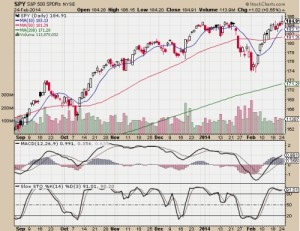As quantitative traders, we design our strategies to make trading decisions based on certain signals. These signals can be as simple, or as complex as we desire.
One of the most basic types of signals that a quantitative strategy will implement is a moving average. While these signals are simple to understand and widely utilized, it is surprising how effective they can be.

Whether you use them as trade signals, trend filters, or as parts of other indicators, moving averages are an essential part of quantitative trading.
A recent post on Forex Crunch discussed three ways to use moving averages to generate trade signals. While none of these methods is new to us, the post provided a good reminder that there are multiple ways to implement a moving average in our trading strategies. Each method has a different goal, but they can all contribute to a profitable trading system.
Crossover Entry/Exit Signals
This is the most common way that moving averages are utilized. We have covered plenty of strategies that use moving average to determine when to enter or exit a trade. This is the basis for many trend following strategies.
The basic concept is that when a faster moving average crosses above a slower moving average, an uptrend has begun and the strategy should take a long positions. Then, when the faster moving average crosses back below the slower moving average, the uptrend has ended and the strategy should exit its position and possibly establish a short position.
One evolution of this strategy is to include a third moving average somewhere between the fast and slow moving averages. This middle moving average will allow your strategy to exit quicker, hopefully preventing giving back profits.
Trend Filters
Another popular application of moving averages is to use a long term moving average as a trend filter for a strategy that uses some other criteria for entries and exits. This can be seen quite often in the mean reversion strategies developed by Larry Connors and Cesar Alvarez.
One simple example of this would be a mean reversion system that only wants to trade short-term dips in the midst of a long-term uptrend. The strategy could use a 200-day moving average to determine the overall trend. Then, if the overall trend is up, it might use a different indicator, like RSI, to identify short-term oversold conditions.
Smoothing Other Indicators
Moving averages are also used in many different indicators in order to smooth out the data signals. Averaging the signals that an indicator produces enables a trader to eliminate some of the noise to get a clearer picture of what is actually happening in a market.
Two great examples of other indicators that utilize moving averages are the Stochastic Oscillator and the MACD Indicator. The Stochastic Oscillator uses the %K line, which is simply a moving average of the %D line, as an entry/exit signal. The MACD Indicator is actually based completely on moving averages.
Leave a Reply